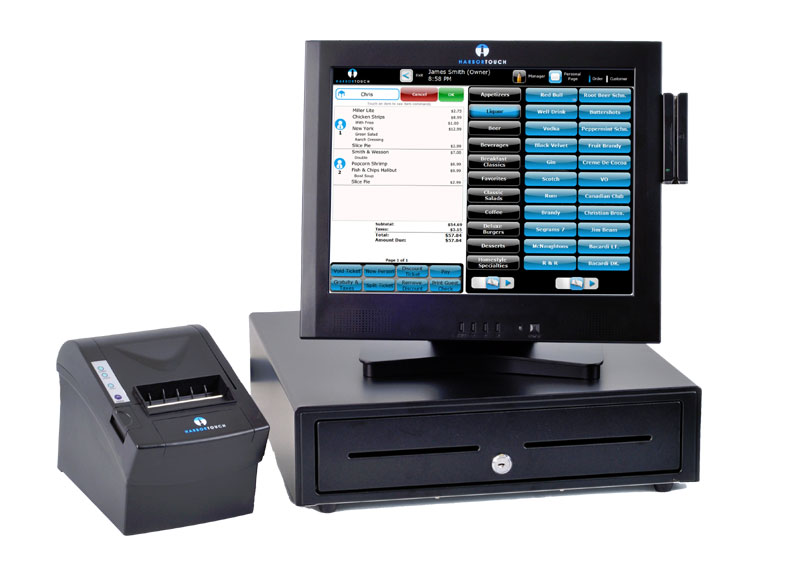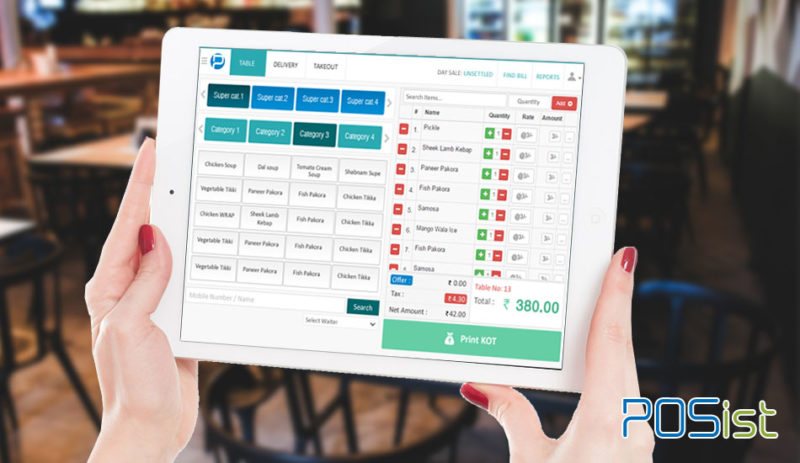Tailored Restaurant POS Software that fit your restaurant’s specific needs
Just How POS System Functions: A Comprehensive Guide for Organization Owners
A POS system acts as an essential tool for contemporary services, incorporating different elements to improve procedures. It encompasses hardware like barcode scanners and software to buy tracking. This system not only processes purchases yet likewise manages inventory and assesses customer actions. Comprehending its capability can substantially impact an organization's efficiency and decision-making. What are the crucial elements that add to this efficiency? Checking out these elements supplies useful understandings.
Understanding the Elements of a POS System
A Factor of Sale (POS) system is composed of several crucial parts that work together to help with transactions and take care of service procedures. At its core, the equipment includes tools such as a money register, barcode scanner, receipt printer, and settlement incurable, all vital for refining sales (Restaurant POS Software). The software program component takes care of supply, sales monitoring, and customer information, offering useful understandings for organization decisions.Additionally, databases store purchase documents and consumer information, making sure information honesty and safety. Network connection allows real-time updates and access to cloud-based services, enhancing operational performance. User user interfaces, developed for ease of use, enable personnel to browse the system promptly, reducing training time. Together, these parts develop a cohesive system that simplifies the sales process, boosts customer support, and aids in reliable monitoring of organization resources. Comprehending these parts is essential for local business owner looking for to maximize their POS systems
Exactly How Sales Transactions Are Refined
When a client decides to buy, the sales transaction launches a series of organized actions within the POS system. Initially, the cashier inputs the products being acquired, which are scanned via a barcode visitor or by hand entered. This action obtains item information, consisting of rates and relevant taxes, from the system's database.Next, the customer exists with the overall quantity due. The POS system then processes the repayment, whether through money, charge card, or mobile settlement methods. For digital repayments, the POS firmly connects with payment processors to license and verify the transaction.Once the settlement is verified, the system produces an invoice, which can be printed or sent electronically. This invoice works as evidence of purchase for the customer. Lastly, the purchase information is tape-recorded in the system, guaranteeing precise sales records and financial monitoring for the business.
Stock Management and Monitoring
Effective stock monitoring and tracking are crucial components of a POS system, as they ensure that businesses keep optimal supply levels and lessen disparities. A durable POS system enables real-time inventory updates, reflecting sales and returns immediately. This allows entrepreneur to navigate to these guys keep track of supply More about the author degrees accurately, making certain that popular products are conveniently available while protecting against overstocking of much less prominent products.Additionally, advanced POS systems provide functions such as automated stock signals and reorder recommendations, simplifying the purchase procedure. Barcoding and RFID innovation enhance precision in tracking supply motion, decreasing human error. Extensive coverage tools provide insights right into supply turn over rates, aiding businesses make informed choices regarding buying and product offerings. Ultimately, efficient stock management with a POS system not only boosts functional performance yet additionally boosts customer fulfillment by making certain product schedule.

Evaluating Consumer Data and Insights
Customer data evaluation serves as a powerful device for companies making use of a POS system. By accumulating and taking a look at transaction information, companies can discover important insights regarding client behavior and preferences. This analysis enables them to identify acquiring patterns, peak buying times, and prominent products, consequently informing supply decisions and marketing strategies.Additionally, organizations can section their customer base, permitting for customized advertising and marketing initiatives that satisfy particular demographics or purchasing behaviors. Recognizing consumer loyalty patterns likewise helps in developing targeted promotions and incentives programs.The information obtained from a POS system can additionally expose insights right into client comments, allowing services to make informed choices regarding item offerings and solution renovations. Ultimately, leveraging client information properly can enhance the general shopping experience, foster client fulfillment, and drive profits development.
Benefits of Implementing a POS System
Applying a POS system pop over to these guys offers many benefits that can greatly enhance organization procedures. To start with, it simplifies transaction processes, decreasing wait times and enhancing customer contentment. By automating sales processes, organizations can reduce human mistake and assurance exact record-keeping. Furthermore, a POS system provides valuable data analytics, allowing proprietors to track sales fads and stock levels in real-time. This insight supports notified decision-making, aiding to enhance supply management and marketing strategies.Moreover, lots of POS systems integrate with various other service devices, such as bookkeeping software application, simplifying monetary management. Improved worker administration functions, such as tracking hours and efficiency, further add to operational efficiency.Lastly, the application of a POS system can lead to enhanced earnings through improved customer experiences and tactical understandings, inevitably promoting business development and sustainability.
Frequently Asked Questions
What Types of Companies Can Benefit From a POS System?

Just how Much Does a POS System Normally Price?
The expense of a POS system normally ranges from a few hundred to a number of thousand bucks, depending upon attributes, equipment, and software program - Restaurant POS Software. Companies should think about continuous fees for maintenance, support, and transaction handling when budgeting

Can I Incorporate a POS System With Existing Software?
Incorporating a POS system with existing software application is often feasible. Several systems provide APIs or integrated compatibility functions, enabling organizations to streamline procedures and boost functionality by connecting different software application applications effectively.
What Training Is Needed for Team to Make Use Of a POS System?
Training for team to use a POS system generally includes understanding software performances, processing purchases, taking care of stock, and taking care of customer interactions - Restaurant POS Software. Practical demos and hands-on practice enhance efficiency and confidence in operation the system efficiently
What Occurs if the Web Drops While Using a POS System?
If the internet drops throughout POS system usage, deals may be disrupted. Numerous systems provide offline capabilities, enabling standard procedures to continue, but full capability, including real-time stock updates, will be limited.